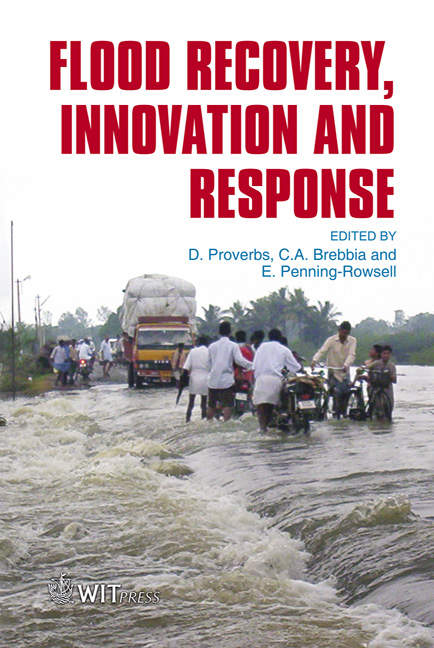Restoration Projects And Mitigation Of Post-flood Hazards – A Case Study On The Maruyama River In Japan
Price
Free (open access)
Transaction
Volume
118
Pages
10
Page Range
187 - 196
Published
2008
Size
2,628 kb
Paper DOI
10.2495/FRIAR080191
Copyright
WIT Press
Author(s)
M. Takezawa, Y. Maeno, Y. Yamashiki, H. Gotoh, M. Kawashima & T. Tanaka
Abstract
The hazardousness of potential flooding and environmental deterioration face river basins throughout the world. Rivers in Japan are relatively short in length and steep in elevation along the banks, which are supposed to funnel rainwater and create floods due to heavy rain from typhoons/hurricanes. In addition, the clearing of forested areas due to widespread residential development in Japan and a lack of forestry workers have led to a broad decline in the riparian forest ecosystems. The study examined the recovery of the Maruyama River basin following the flood disaster in 2004. The Maruyama River disaster-relief and restoration projects addressed the mitigation of environmental damage as well as economic impacts. The Maruyama River basin is a noted habitat of the Oriental white stork, which became extinct in 1971, and was reintroduced as the basin through the breeding program in 2003. The 2004 flood destroyed the stork habitat. As a part of the recovery effort, the Japanese government has worked with the Toyooka City government and the Maruyama River Basin Committee to rebuild and expand the habitat of the stork. Preserving the habitat of another endangered species, the committee has added the Japanese giant salamander into a species name list in the restoration plan. These projects are expected to reinvigorate the local economy and preserve the environment of the river basin. Keywords: restoration, rehabilitation, flood hazard, stork, salamander, habitat.
Keywords
restoration, rehabilitation, flood hazard, stork, salamander, habitat.





